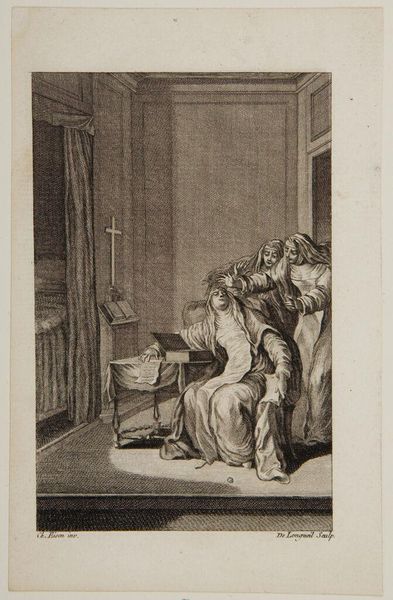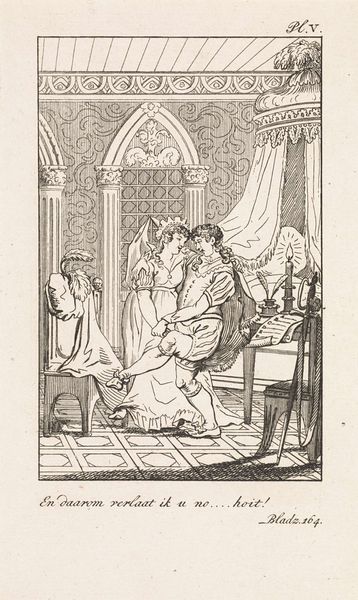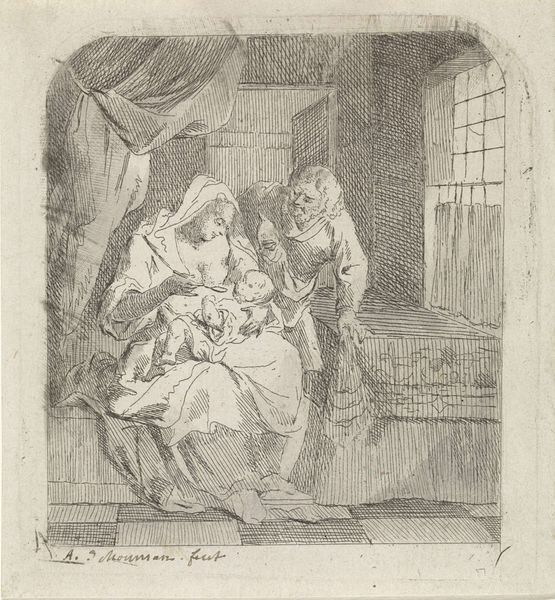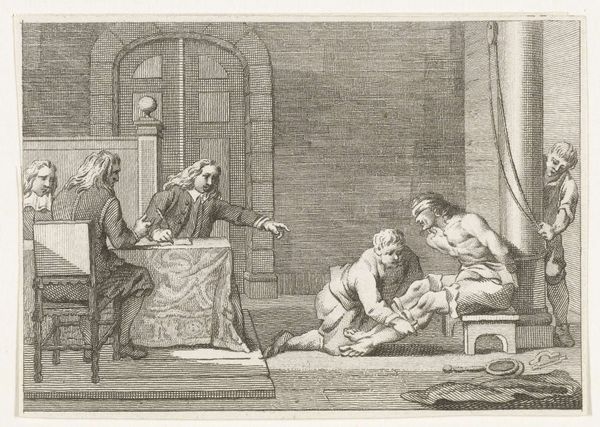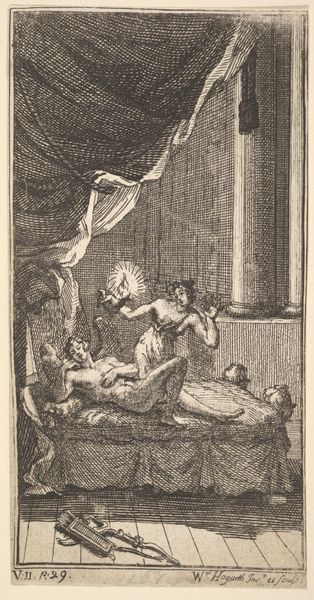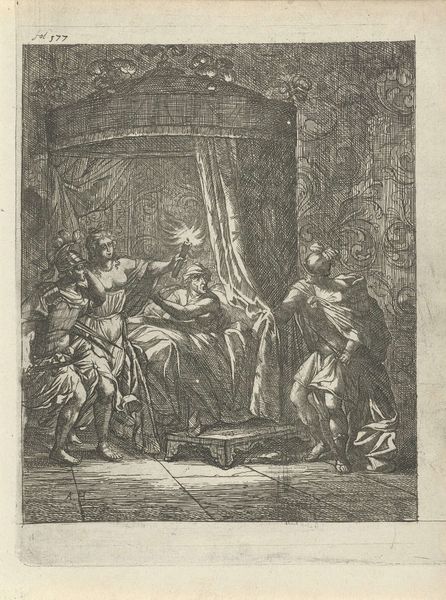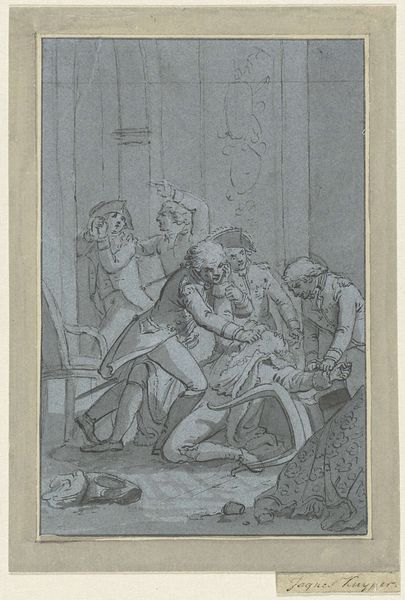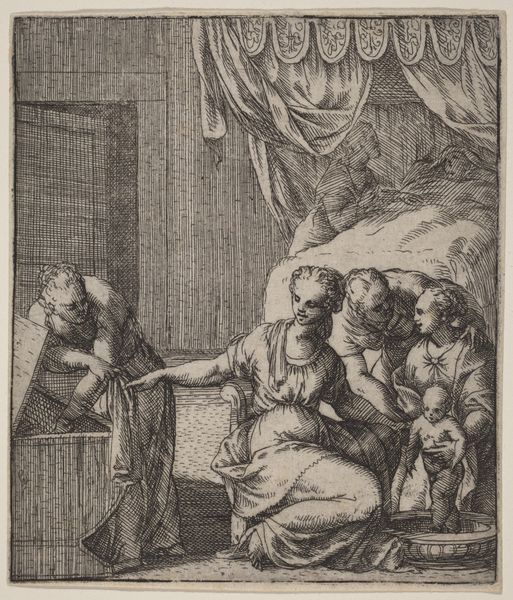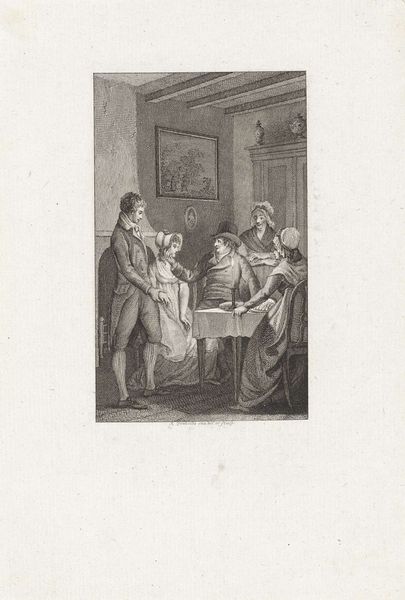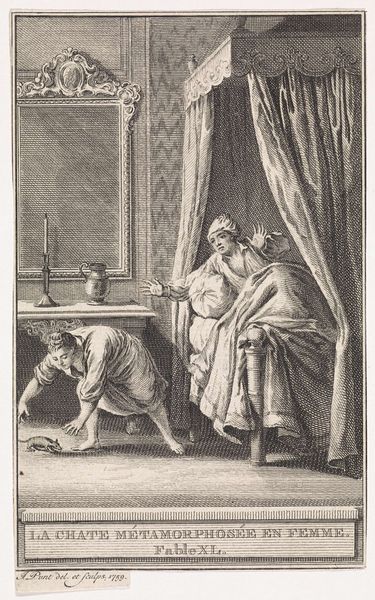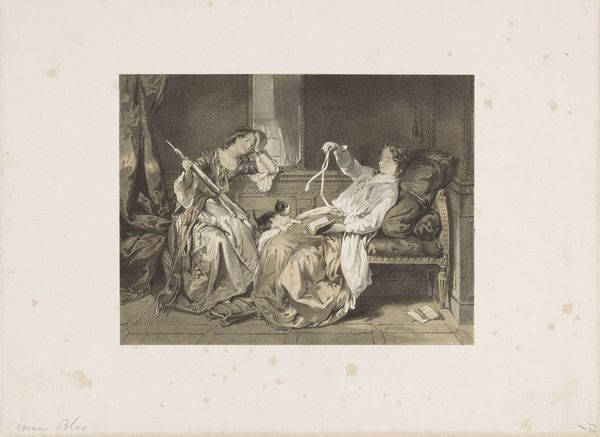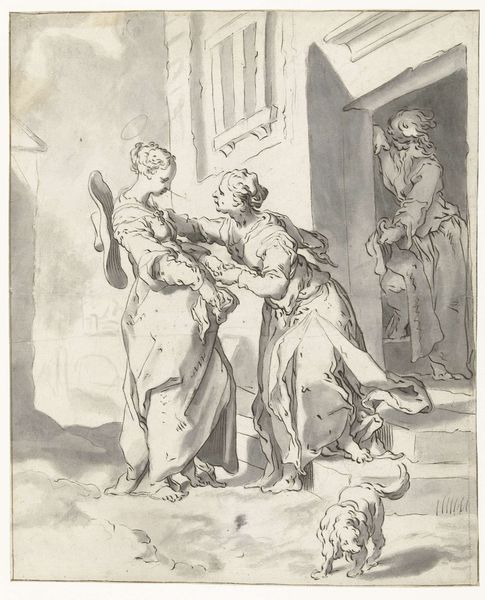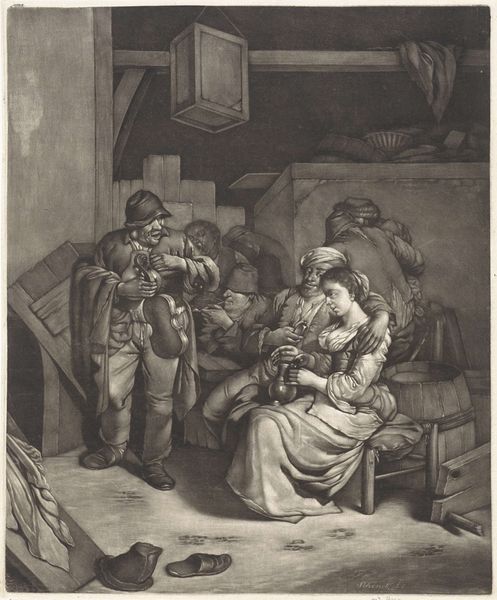
drawing, etching
#
drawing
#
narrative-art
#
baroque
#
etching
#
figuration
#
line
#
history-painting
Copyright: Public Domain: Artvee
Curator: Here we have Giovanni Domenico Tiepolo's etching, "Joseph Relays to Mary God’s Command to Flee," created between 1750 and 1753. What strikes you initially about it? Editor: There's a dramatic intensity to this seemingly simple domestic scene. The stark contrast in the line work, the slightly chaotic composition, and the focused urgency in the figures’ expressions create a sense of impending action. Curator: Tiepolo situates this biblical episode – Joseph warning Mary about Herod's impending massacre and the need to flee to Egypt – within the context of 18th-century Venetian society. Look at the interior setting, the clothing; these are not ancient Palestine, but very much of his own time. Editor: Absolutely. That infusion of the present with the sacred resonates through familiar symbolic codes. Joseph’s aged appearance and pointing gesture echo centuries of artistic depictions of divine messengers and the weight of prophecy. The angel appears to direct him on. It seems very Renaissance. Curator: Right. Consider also the broader function of art during that era. Tiepolo, as a member of a dynasty of painters, was very keen on demonstrating social responsibility through art. This etching would have been distributed and would be more accessible than larger scale painting. Its subject also reflected deep anxiety about power and how families could exist and resist amid upheaval. Editor: It makes sense that the family unit is so prominent. There's real intimacy here, though also an aura of unrest. A subtle but universal narrative of maternal protection, fatherly duty, and the fragility of innocence threatened by external forces. The presence of those attending suggests caretaking. Curator: Well observed. These prints circulated widely in 18th-century Europe, spreading visual culture and these moral and theological interpretations. Tiepolo wasn’t just creating an artwork, but participating in a wider conversation about faith and how to respond to unstable political climates. Editor: Yes, it highlights how our interpretations of biblical scenes always reflect the needs and anxieties of the period that creates them. What seemed like an almost commonplace biblical reference speaks about power in the artist’s time. It serves as a powerful demonstration of visual continuity. Curator: Precisely. We started with aesthetics, and landed in a quite charged consideration of societal dynamics of its time.
Comments
No comments
Be the first to comment and join the conversation on the ultimate creative platform.
